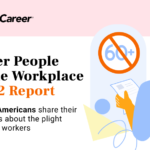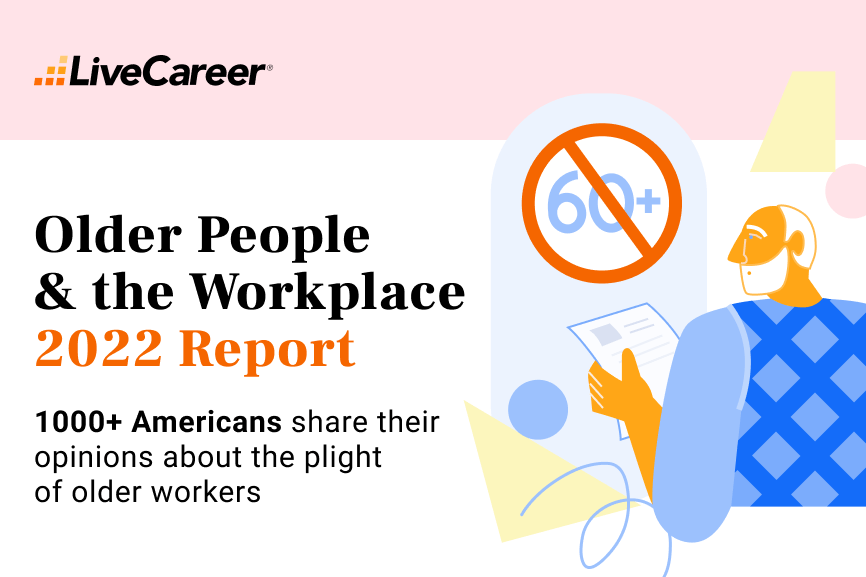Fears and Phobias at Work [Study]
Fears and phobias are stealthy predators lurking in the shadows of our minds, waiting to pounce at the slightest hint of vulnerability. They can strike anywhere, anytime.
Some of them can be easily avoided. But what if your fears and phobias are something you need to encounter constantly? Let’s say eight hours a day, five days a week.
Imagine a paramedic who trembles at the sight of blood, a truck driver who can’t face crossing a bridge, or a mail delivery worker who’s terrified of dogs. These unfortunate souls navigate a world where the mere thought of their daily job duties leaves them in a cold sweat.
For those with fears and phobias, the workplace can feel like a battleground, with our anxieties waging war on our professional aspirations.
- Over 40 million adults in the U.S. (19.1%) have an anxiety disorder.
- The U.S.’s most popular fears and phobias include public speaking, heights, bugs, insects or drowning.
- It’s estimated that 19 million Americans have at least one phobia, ranging from mild to severe.
- There are over 500 named phobias. Most of them are extremely rare.
- Work-related phobias cover cyberphobia (fear of computers), social phobia, glossophobia (fear of speaking in public), and above all ergophobia (general fear of work).
With that in mind, we conducted an exploration of fears and phobias at work. We examined:
- The state of fears and phobias in the U.S.
- Feelings that come with discussing anxieties in the workplace
- The impact of fears and phobias on work and career
- Seeking professional help
- Social perception of fears and phobias
Key findings:
- 87% suffer from work-related fears.
- 81% admit that their fears and phobias have affected their job in various negative ways.
- 25% have never sought help to overcome their anxieties.
- 74% experienced discrimination because of their fear or phobia.
- 80% believe having fears and phobias is something to be ashamed of.
But that’s just the beginning. So, put on your best Braveheart face and join us as we uncover the secrets of fear and phobias at work.
The State of Workplace Fears and Phobias
Before diving into our research, take a look at two simple definitions.
According to Merriam-Webster Dictionary, fear “is an unpleasant, often strong emotion caused by anticipation or awareness of danger.”
Conversely, phobia “is an exaggerated, usually inexplicable and illogical fear of a particular object, class of objects, or situation. Sam Nabil, CEO, and lead therapist of Naya Clinics, adds, “Phobia is always connected to something specific. Its effect can be severely disabling in that it can disrupt an individual’s life and relationships.”
Now you’re ready to enter the world of fears and phobias.
Do you ever feel afraid or anxious at work? If the answer is yes, you’re not alone.
According to our research, almost 9 in 10 respondents (87%) admit they have fears affecting their professional lives.
That’s the overall picture. But there were some interesting differences when we examined different demographics.
- Employees of corporations with 501+ people are the most fearless. 32% of them don’t suffer from any fears, compared to only 15% of workers in micro companies (1–10 employees) and 10% of those employed in large firms (201–500 people).
- Employees aged 25 or younger reported the lowest incidence of fears and phobias, with 18% stating that they don’t have any fears affecting their work life. In comparison, only 12% of employees aged 41+ said the same.
- Fear isn’t linked to political affiliation. Overall, Independent, Democrat and Republican-leaning respondents all had the same incidence of fears affecting their work, 87%.
Moreover, almost 8 in 10 respondents (76%) report suffering from phobias that also impact their work life.
- Here, again, people employed in companies with 501+ workers are the largest group of anxiety-free, with 47% saying they don’t have any phobias influencing their professional life, compared to workers employed in smaller companies at around 22%.
- The age category with the highest percentage of people without phobias is 41 years or older, with 28%. On the other hand, only 18% of those aged 26–40 and 22% of those 25 or younger report having no phobias.
- People with more work experience are more resilient. 32% of employees with 6 or more years of experience report having no phobias. In comparison, only 18% of employees with 3–5 years of experience and 19% of those with 1–2 years of experience reported the same.
At this point, it’s worth noting the incidence of phobia in the American population is much lower than 76%. This is a figure self-reported by our applicants, and their fears may not meet the formal clinical definition of phobias.
But regardless of clinical definitions, fears and phobias haunt even the bravest of employees. It’s a reality that confirms our worst concerns: These silent battles are more common than ever imagined.
In a society where superhero employees reign supreme, it’s easy to overlook the struggles of ordinary people. But just like how Spider-Man might have beaten a fear of heights, and Bruce Wayne might have overcome a fear of bats, employees fight their non-tangible villains every day.
We asked our survey respondents to share their specific work-related concerns to understand better what people are fighting with. Here are the concerns pointed out most often.
- Making decisions
- Taking responsibility
- Public speaking
- Getting fired
- Making a mistake
- Being disliked by co-workers or boss
- Not being able to handle the workload
Some of our respondents also mentioned being scared of their boss or manager, speaking to the management team, work challenges, work pressure, working overtime, but also fear of taking time off or even fear of success.
Work-related anxieties have a direct impact on job performance. It’s obvious. However, what is often overlooked is the range of fears and phobias that still have a significant impact despite being only indirectly related to work. Therefore, for some, the work environment becomes a constant struggle to overcome their fear of:
- Public spaces or crowds
- Speaking on the phone
- Disorder and untidiness
- Closed or open spaces
But there’s more. Respondents also mentioned fear of heights, rude people, noise, or fear of COVID and getting ill.
And again, these can make it challenging to perform professional duties and climb the career ladder. Potentially trivial fears like a fear of heights can prevent a person from working at a company with offices on the 30th floor of a skyscraper, while fear of phone calls makes it near impossible to work with clients.
But our examples are just the tip of the iceberg. Some suffer from severe clinical conditions like arithmophobia (fear of numbers), bibliophobia (fear of books), cyberphobia (fear of computers) or papyrophobia (fear of paper). Imagine looking for a totally paperless job. Or one that doesn’t require using a computer.
But still, no matter what fear you’re facing, working is inevitable. So you have no choice but to act like a superhero and fight your everyday demons. But what if you can no longer hide and have to pull off the mask and show your fears to the world?
Is an honest conversation with co-workers or managers an option?
Sharing Experiences
Discussing fears and phobias can help to address them and create a healthy and respectful workplace culture. And it seems most people are willing to do so.
80% of respondents have discussed their problems with someone at work.
- Those most unwilling to share their fears and phobias are people employed in corporations with 501+ workers, 40%, and those working in businesses with no more than 10 workers, 33%. In comparison, only 12% working in companies with 11–50 people have never shared their anxieties.
There were also some interesting differences between industries:
- Software/IT workers were most reluctant to share their fears. 26% have never discussed them at work. In comparison, just 12% of education sector employees reported the same.
Those who opened up about their fears and phobias confessed to:
- Co-worker – 40%
- HR team – 31%
- Boss/manager – 26%
- Other – 3%
Individuals may feel less intimidated and more supported when talking to someone they work alongside every day.
However, the fact that fewer people have opened up to their boss or manager suggests that there’s a lack of trust or fear of negative consequences associated with sharing fears with those in positions of power. This highlights the importance of creating a safe and supportive workplace culture. Employees should feel comfortable seeking help and sharing their struggles without fear of judgment or repercussions.
And these assumptions appear to be true. Those respondents who kept their fears and phobias a secret did it because of:
- Feeling ashamed – 21%
- Fear of lack of trust – 17%
- Concern their fears will be interpreted as a lack of motivation to work – 15%
- Fear of being fired – 14%
- Fear of being denied a pay raise – 14%
- Fear of discrimination – 10%
- Fear of being rejected for a promotion – 10%
Each person’s reason is different, yet all are entirely understandable. After all, we never know what the reaction will be.
But still, as humans, we often find comfort in sharing our problems with others.
One of the questions we asked respondents explored how comfortable they feel discussing fears or phobias with their colleagues.
- 61% of respondents feel comfortable or very comfortable.
- For 28%, the experience is neutral.
- Only 11% feel very uncomfortable or uncomfortable.
Interestingly, there were noticeable differences in answers among various demographic groups.
- Workers in the education sector feel the most uncomfortable sharing their fears and phobias with co-workers, 22%, compared to manufacturing workers, 7%.
- Employees earning less than $25,000 feel uncomfortable talking about their problems compared to those earning $75,000 or more, 19% vs. 1%, respectively.
But co-workers are one thing, and management is another. So when talking to a boss or manager, do we feel more embarrassed? Not necessarily.
- 57% feel comfortable or very comfortable discussing their fears and phobias with a boss or manager.
- 29% adopt a neutral attitude.
- 14% report feeling highly uncomfortable or uncomfortable.
Surprisingly, most people feel pretty comfortable discussing their fears and phobias in the workplace. This fact is noteworthy because mental health still carries a lot of stigma and shame. Discussing personal struggles requires trust, which may be difficult to achieve in some work environments.
But who feels most uncomfortable discussing fears and phobias with the boss/manager?
- 21% of people earning less than $25,000, 19% of those earning $25,000 to 49,000 vs. 6% of higher earners ($75,000 or greater).
- 22% of those employed in small companies (1–10 workers). Compared to around 13% of those employed in bigger firms (from 11 to even 500 people).
However, an honest conversation doesn’t mean our problems disappear.
When Fear Impedes Career Growth
Fears are a double-edged sword. While they can help us stay alert and avoid potential dangers, they can also hold us back from reaching our full potential.
What is the real-world experience of our respondents?
It’s alarming to see so many individuals confessing that their fears have wreaked havoc on their careers. The detrimental effects of workplace anxieties can’t be ignored. It’s high time for individuals and organizations to acknowledge the severity of this issue and take concrete measures to tackle it head-on.
But to know how to fight, we must know what to fight. Our respondents point to several detrimental impacts caused by fears and phobias.
- Frequent absences from work – 37%
- Missing out on promotions – 35%
- Being forced to quit a job – 35%
- Inability to complete projects – 34%
- Acting withdrawn in group settings – 34%
- Being unable to apply for some jobs – 32%
- Missing out on pay raises – 32%
- Negative impact on overall performance – 31%
- Poor job satisfaction – 31%
It’s truly eye-opening to see that so many individuals are experiencing these adverse effects, with frequent absences from work and missing out on promotions being the most common. And it is especially worrying that many individuals are forced to quit their jobs due to their fears and phobias.
However, there’s also a lucky 19% who report their fears and phobias don’t influence their career, professional development, or performance.
But here’s the most striking finding:
Checkmate for fears and phobias.
For those not struggling with similar problems, this is incomprehensible. But with the proper support and resources, we can confront our anxieties head-on and achieve our career aspirations.
Overcoming Fears and Phobias
Seeking professional help to overcome fears and phobias is more common than you might think.
More than 7 in 10 respondents (75%) were brave enough to undertake treatment and fight their problems.
From spiders to heights and even public speaking, fears and phobias can significantly impact our lives, but seeking help can be a game-changer.
If you’re in the minority and have so far avoided professional help, consider how therapy can change your life.
Respondents point out several motivating factors for seeking help and overcoming work-related fears or phobias.
- Getting a dream job – 46%
- Feeling that the work environment is supportive – 45%
- Improving social relations at work – 44%
- Additional workplace benefits – 44%
- Promotion – 41%
- The promise of improving motivation and performance to work – 37%
- Pay raise – 36%
The most common reason cited is the opportunity to secure their dream job, followed closely by a supportive work environment. Financial issues like promotion, pay rise, and additional workplace benefits also make an appearance. Conquering your fears can have significant benefits.
But are employees equipped with weapons that enable them to fight fears and phobias? Yes!
According to 86% of respondents, there is enough support and resources available at work to help individuals with their fears and phobias.
This means that most individuals have at their fingertips everything necessary to overcome their fears and phobias. Potentially leading to improved performance, better workplace relationships, and career growth.
However, society at large can still be an obstacle.
Social Perception of Fears and Phobias
Fears and phobias affect a significant portion of the population. However, despite their prevalence, they often attract a social stigma, making it difficult for individuals to seek help or talk openly about their experiences.
Let’s explore how society views fears and phobias.
For many employees, their fears and phobias are a personal struggle and a source of discrimination and exclusion.
74% of respondents admit they have felt discriminated against because of their fears or phobias.
- Those who faced the most discrimination were 88% of manufacturing workers and 82% of people with no college degree.
- The least affected by this problem were software/IT workers and employees of firms with 501+ workers, with “only” 62% and 65%, respectively, admitting they experienced fear- or phobia-related discrimination.
Moreover, 76% witnessed someone being discriminated against due to their anxieties.
These findings reveal the harsh reality that many employees confront in the workplace. Discrimination based on fears and phobias can create a toxic environment where individuals feel unsupported and marginalized.
After all, such problems aren’t something to be ashamed of, right? Well …
A significant majority of respondents, 80%, believe that having fears and phobias is something to be ashamed of.
Whether you suffer from fears yourself or witness the struggles of others, fears and phobias aren’t something to be ashamed of. This stigma can prevent individuals from seeking help and support, negatively impacting their well-being and job performance.
But the social perception of fears and phobias is changing. In this context, it’s essential to explore authentic perspectives on fears and phobias in the workplace, to understand better the challenges employees face and identify opportunities for improvement.
As a part of our research, we confronted respondents with several opinions regarding fears and phobias. We asked them to rate how much they agreed with each sentence using a scale. The percentages below represent those who agree with each statement.
- Employers should provide more support and resources for their employees with fears and phobias – 73%
- Employee benefit plans should include therapy or counseling for fears and phobias – 72%
- Mental health, including fears and phobias, should be treated with the same seriousness at work as physical health issues – 71%
- Fears and phobias should be openly discussed in the workplace – 70%
- In recent years, society has become more accepting of people with fears and phobias – 68%
- My employer’s policies and actions help employees with fears and phobias feel more comfortable and included at work – 67%
- Fear of stigma or discrimination can prevent employees from seeking help for their fears or phobias – 66%
The data highlight important aspects of everyday reality in perceiving fears and phobias, ranging from professional life through private life to social opinions. It suggests a growing awareness of the importance of mental health, including fears and phobias, in the workplace. However, there is still a significant gap between the recognition and the implementation of supportive policies and resources. Many employees feel that their employers could do more to help and support those struggling with fears and phobias. Additionally, the fear of stigma or discrimination remains a significant barrier for employees seeking help, highlighting the need for a workplace culture of openness and acceptance.
The solution? Open discussion, the shift towards greater acceptance, promoting awareness and education around mental health, or creating a culture of understanding and support.
It’s not much, is it?
Methodology
The above-presented findings were obtained by surveying 1039 respondents online via a bespoke polling tool. They were asked questions about their fears and phobias that influence their work and career. These included yes/no questions, scale-based questions relating to levels of agreement with a statement, questions that permitted the selection of multiple options from a list of potential answers, and a question that allowed open responses. All respondents included in the study passed an attention-check question.
Limitations
The data presented relies on self-reports from a randomized group of respondents. Everyone who took our survey read and responded to each question without any research administration or interference. There are many potential issues with self-reported data, like selective memory, exaggeration, attribution or telescoping. Some questions and responses have been rephrased or condensed for clarity and ease of understanding for readers.
Fair use statement
Want to share the findings of our research? Go ahead. Feel free to use our images and information wherever you wish. Just link back to this page, please — it will let other readers get deeper into the topic. Additionally, remember to use this content exclusively for non-commercial purposes.
Sources
- Carloni, K. and Fuller, K., “Ergophobia (Fear of Working): Signs, Symptoms, & Treatments”
- Ingraham, Ch. “America’s top fears: Public speaking, heights and bugs”
- Muschalla,B. and Linden, M., “Workplace phobia – a first explorative study on its relation to established anxiety disorders, sick leave, and work-directed treatment”
- National Institute of Mental Health, “Any Anxiety Disorder”
- SingleCare, “Phobia facts and statistics 2023”















